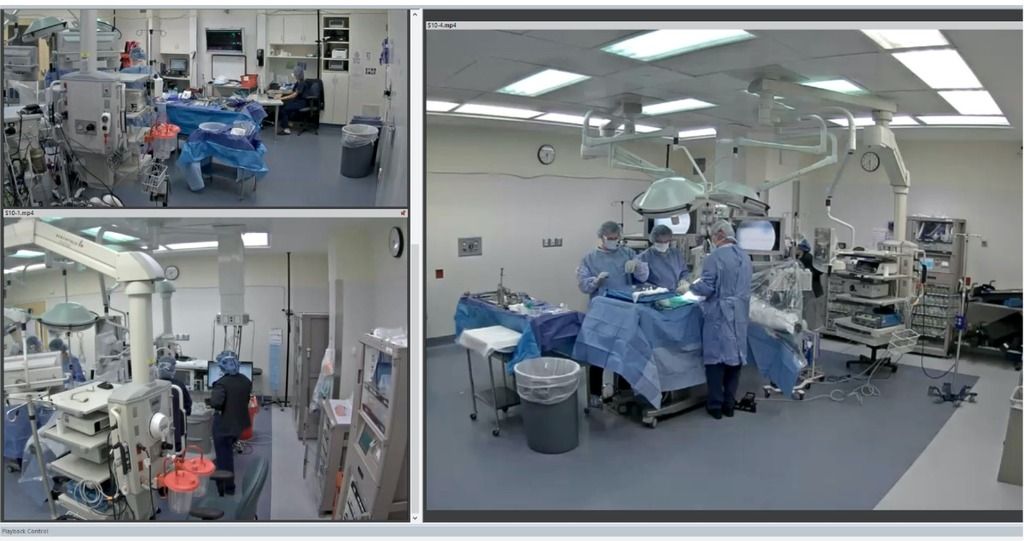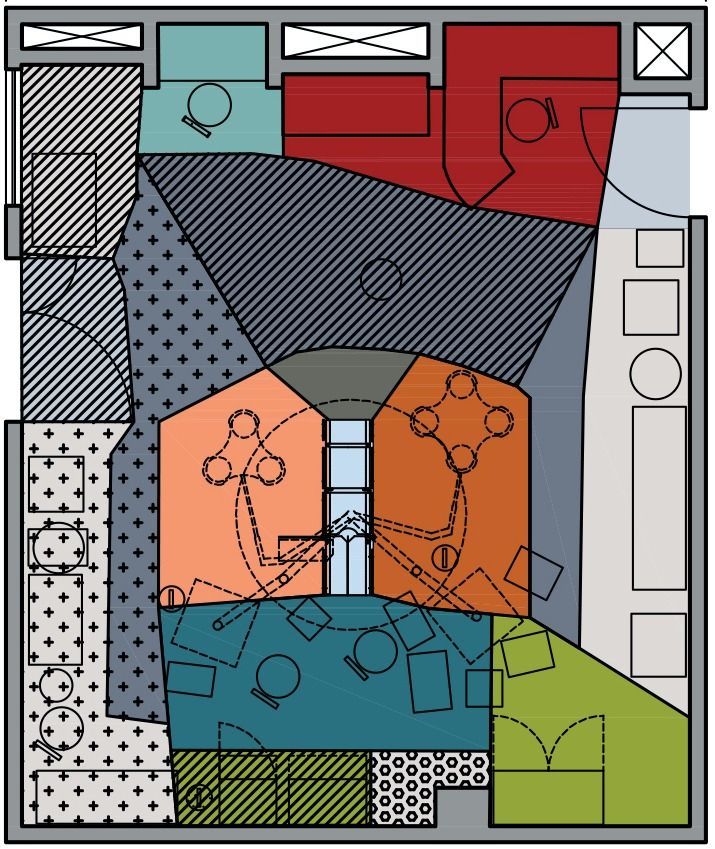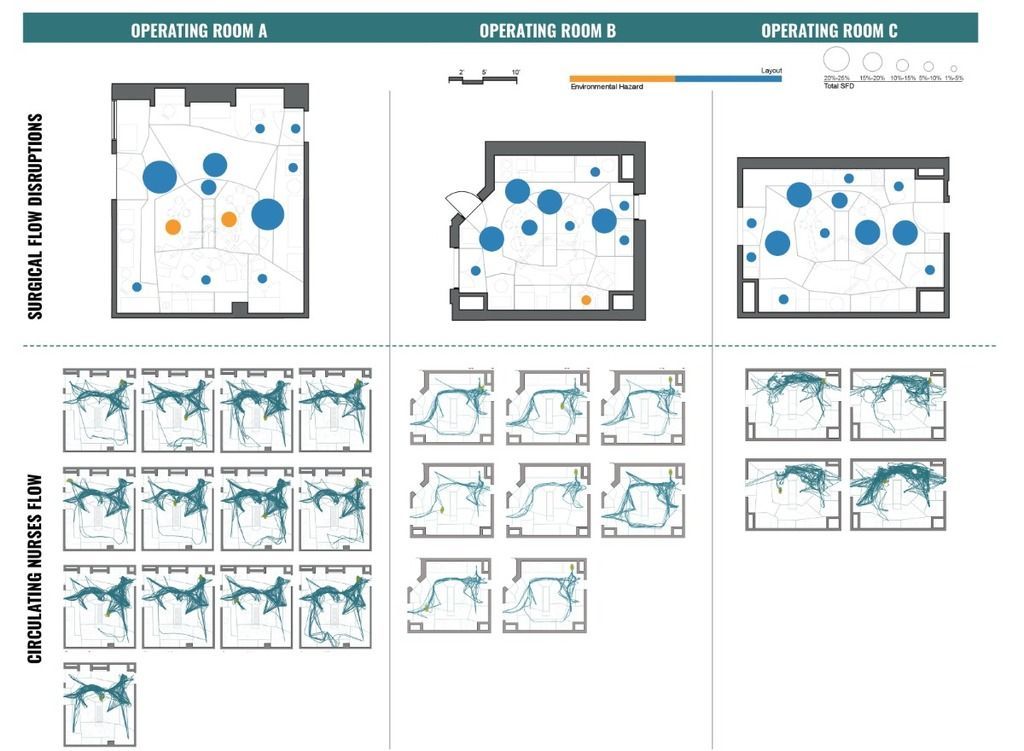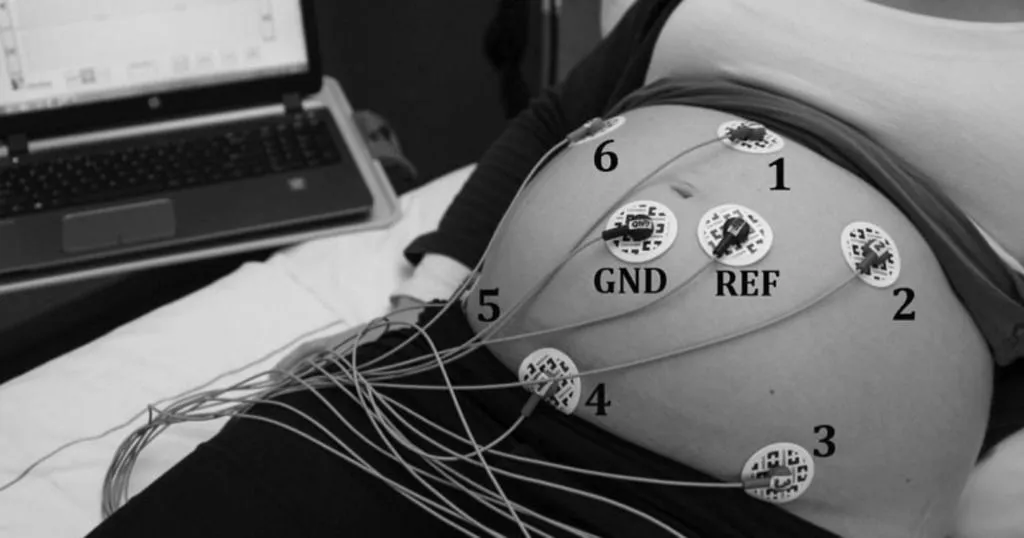Organized chaos or well-oiled machine? Optimizing safety & efficiency in an OR
Dr. Joseph and her team searched for solutions to minimize flow disruptions in Operating Rooms and make them as safe and efficient as possible.
Posted by
Published on
Mon 18 May. 2020
Topics
| Coding Behavior | Observational Research | Portable Lab | The Observer XT | Healthcare | Teamwork | Medical Encounter |

Hospital operating rooms (OR) are spaces in which medical personnel performs often complex surgeries and tasks with many interactions between humans and equipment. Even though to the casual observer an operating room may come across as organized chaos, it’s meant to be a well-choreographed sequence of procedures. Any issues with regard to teamwork, communication, workflow, and equipment design are known to lead to complications and increased mortality.
Dr. Anjali Joseph and her team use a Portable Noldus Observation Lab, behavioral coding with The Observer XT, and computer modeling to qualify and quantify the goings on during surgeries in real operating rooms, not simulated versions of one. Their goal is to identify flow disruptions, determine what’s causing them, and come up with solutions to minimize them and make ORs as safe and efficient as possible.
Direct observation and behavioral coding
Joseph et al. (2019) used a Portable Noldus Observation Lab (with 4 cameras and microphones) to record activity during 28 surgeries in 3 operating rooms. The locations, roles, and activities of all medical personnel, along with any flow disruptions (FD), were then coded in detail with The Observer XT software. Across all surgeries a total of 2504 FDs were observed, 26% of which were major ones.

The researchers found that the rate of major FDs increases with the rate of minor FDs, especially when they are related to particular equipment and its positioning in the room, and certain specific locations in the OR. More FDs were observed in the anesthesia zone than any other zones.

The central role of the circulating nurse
The role of the circulating nurse (CN) was studied in more detail by Neyens et al. (2018) and Bayramzadeh et al. (2018). Across 25 surgeries, in 3 different ORs, the CN spent 34 hours performing 1471 tasks, each categorized as patient, equipment, material, and information related. CNs were more likely to be involved in layout and environmental hazard FDs when involved in patient, material, or equipment-related tasks compared to information tasks, while the latter tasks involve the least movement.
The OR was divided up in multiple zones, each of which was categorized as functional (work stations, preparation zones, surgery, etc.) or transitional. The CN traveled through multiple zones during the vast majority of activities. Of all flow disruptions, 58% happened in the transitional zones, while behavioral coding revealed that even though the layout of the 3 ORs varied, the flow disruption patterns were quite similar: certain zones will always be adjacent to each other.

Digging deeper: Simulation modelling to analyze traffic flow in the OR
To dig deeper into what all is going on in an operating room, Taaffe et al. (2020) used the behavioral data set generated with The Observer XT to model the traffic flow during surgery. They looked at the effect of the size and shape of the room, the orientation of the surgery table, and the location of the workstation of the circulating nurse.
A larger room reduced the number of contacts and transitions, even though it required more movement. Positioning the table at an angle into the center of the room with the workstation at the foot of the table resulted in a reduction of undesired contacts among medical personnel.
Future work: Adapting the OR to COVID-19 conditions
Dr. Joseph and her team are presently using the Noldus Portable lab and The Observer XT to observe and code telemedicine sessions for stroke patients conducted in an ambulance. They also just finished coding a set of videos from 25 additional surgeries in new, optimized ORs that were finished in January 2020. Plans are now underway to use the Portable Lab and The Observer XT to study adaptation of operating rooms for use during COVID-19.
References
Joseph, A.; Khoshkenar, A.; Taaffe, K.M.; Catchpole, K.; Machry, M.; Bayramzadeh, S. & RIPCHD.OR study group. (2019). Minor flow disruptions, traffic-related factors and their effect on major flow disruptions in the operating room. BMJ Quality & Safety. http://dx.doi.org/10.1136/bmjqs-2018-007957
Bayramzadeh, S.; Joseph, A.; San, D.; Khoshkenar, A.; Taaffe, K.; Jafarifiroozabadi, R.; Neyens, D.M. & RIPCHD.OR Study Group (2018). The Impact of Operating Room Layout on Circulating Nurse’s Work Patterns and Flow Disruptions: A Behavioral Mapping Study. Health Environments Research & Design Journal, 11, 124-138. https://doi.org/10.1177/1937586717751124
Neyens, D.M.; Bayramzadehb, S.; Catchpole, K.; Joseph, A.; Taaffe, K.; Jurewicza, K.; Khoshkenara, A.; San, D.; RIPCHD. OR Study Group (2019). Using a systems approach to evaluate a circulating nurse's work patterns and workflow disruptions. Applied Ergonomics, 78, 293-300. https://doi.org/10.1016/j.apergo.2018.03.017
Taaffe, K.; Joseph, A.; Khoshkenar, A.; Machry, H.; Allison, D.; Reeves, S.T. & RIPCHD.OR Study Group (2020). Proactive Evaluation of an Operating Room Prototype: A Simulation-Based Modeling Approach. Journal of Patient Safety. https://doi.org/10.1097/PTS.0000000000000693
Image Credit: Dr. A. Joseph
Related Posts

Observations of surgeons as a tool to assess competency

Robots helping people with dementia

